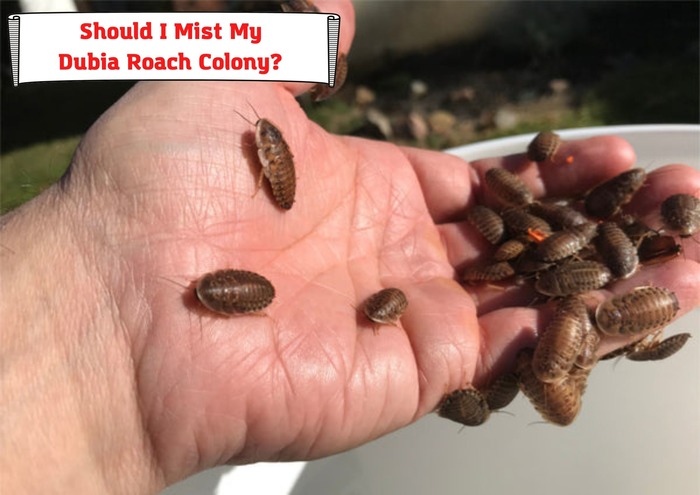Anyone worried about the health of their pet snake has landed on the right page. Whenever we bring a pet animal into our homes, it is wise to ensure that it can have a happy and healthy life. This includes ensuring we do not transfer any illnesses to our pets and vice versa.
Fortunately, where the pet concerned is a snake, you have little worry about it. These sturdy reptiles have been crawling around for eons and have an immune system to boot. That said, responsible pet owners always take pains to ensure neither they nor their snakes are exposed to health risks. If you are thinking about getting a pet snake, you will have to consider more than whether or not it is venomous.

Snakes, even when healthy, host a number of pathogens that can work a number on the human body. Owning a pet snake without paying regard to the increased safety and health risks is downright irresponsible, especially if your home has inhabitants with weakened immune systems, e.g., people who are older than sixty-five and children who are younger than five.
Germs can be transferred from the snake to you (or vice versa) whenever you handle the snake or come into contact with its tank, Join us as we discuss everything you need to know about keeping you and your pet as healthy as possible. This incus
- The most common germs transmissible between humans and snakes
- How to avoid transmitting pathogens between you and your snake
Common Pathogens Transmissible Between Snakes and Humans
Once you are set on having a snake for a pet, you must learn to take care of it efficiently. Most of the pathogens that are transmissible between you and your snake can be eliminated by maintaining hygiene, proper veterinary care, and appropriate husbandry. As a rule of thumb, the best way to prevent exchange is to minimize how much you handle and pet your snake and its tank.
Here are the most common pathogens that affect both you and your snake.
1. Mycobacterium marinum
The mycobacterium maximum commonly affects reptiles, fish, amphibians, and people. The bacteria thrive in salty and fresh bodies of water. Though this bacterium typically affects fish, it can spread to humans through our interesting reptilian pets and, mercifully, is not communicable among humans.
Anyone who gets infected by the mycobacterium marinum likely picked it up from contaminated water. Whenever handling your snake or cleaning its tank, ensure you do not have any open wounds or sores. Broken skin allows the bacteria to penetrate your system with ease.
Signs of Mycobacterium Marinum
If you are a snake owner in the prime years of your life, you may have been infected with the mycobacterium marinum pathogen and failed to notice. Anyone with a strong immune system will not miss a step because of this versatile pathogen. Kids or elderly persons are more likely to suffer a severe infection.
The infection initially presents as a raised sore or bump on the area the mycobacterium marinum penetrated the skin. Depending on the victim’s immune system, the sores may clear off without medical attention or progress to affect other areas of the body. Often, the sores appear linearly on the arms or hands and rarely spread to other body parts.
Sores are usually on the hands or arms. Multiple sores might form a line. In very rare cases, the bacteria can spread throughout the body. Some infections get better on their own, while others might require antibiotics or other treatments. Depending on the severity of the symptoms, diet, and environment of your snake, the infection may dissipate on its own. If not, you should a reptile veterinarian for accurate diagnosis and an effective prescription of antibiotics.
2. Salmonella spp
You likely have heard of salmonella as a nasty stomach bug that people catch after eating food or drinking water from a sketchy source. Your snake is not above suffering from a salmonella spp bacterial infection – commonly called salmonellosis. This bacterium thrives in food and water that s contaminated with animal feces
If you visit your washroom and handle your pet snake without washing your hands, you are likely to transfer more than love and affection. Luckily for your pet reptile, its gut is much tougher than ours. Healthy snakes have a fair amount of salmonella spp bacteria residing in their gastrointestinal tract. These bacteria can live in your snake without making it ill. If only we could be so lucky.
People who are younger than five years or older than sixty-five are at a very high of suffering a severe salmonellosis infection. It is wise to caution such members of your household against handling the snake or cleaning its tank.
Signs of a Salmonella spp Infection
We have already mentioned that salmonella spp bacteria are a healthy feature of your snake’s digestive system. Though the bacteria will not make your snake sick, that is not the case for you. If you have the misfortune of suffering salmonellosis, you can expect to undergo abdominal cramps, fever, and diarrhea within six hours of catching the bug. These symptoms are quite severe and can last for up to a week before clearing off.
3. Aeromonas spp
The Aeromonas spp bacteria commonly infect amphibians, fish, and reptiles. This is because the bacteria are usually found in fresh bodies of water, e.g., ponds, aquariums, or your snake’s dipping bowl. These bacteria rarely affect people because even when transferred from snakes to people. Most people may not even notice; only those with compromised immune systems are likely to develop severe disease.
Snake owners must be vigilant because while Aeromonas spp is not communicable between people, it easily spreads from snake to human or vice versa. The most common means that Aeromonas spp uses to spread is by penetrating your systems if you handle your snakes while having open wounds. The next means of spread is less worrisome because you are unlikely to drink the contaminated water in your snake dipping bowl.
Signs of Aeromonas spp Infection
Kindly note that only snakes and humans with weak immune systems, i.e., children and the elderly, will typically display these signs. If you are a spring chicken, you may harbor these bacteria without being ever the wiser.
If your snake is fighting off an Aeromonas spp infection, it will likely develop open sores, weight loss, and skin discoloration. Once people with a weak immune system catch the Aeromonas spp bacteria, they are likely to suffer nausea and diarrhea.
You do not have to be overly concerned about this bacterium because all you have to do to keep it at bay is refrain from handling your snake while suffering open wounds. Additionally, ensure your children do not attempt to drink the water in the tank. All these efforts are on top of the usual precautions, e.g., washing hands before and handling the snake.
How to Ensure You and Your Snake Are the Picture of Health
Reptiles make great pets because most of them live a very long life. It also helps that they are more low maintenance than furry or feathered pets, which often require to be fed daily. It is, however, important to know that even when your snake is clean and healthy, it is still capable of transmitting disease-causing germs.
As a general rule, snakes should be kept as pets in the same household as anyone under five or over sixty-five. Here are other tips:
- Provide a suitable enclosure for your snake. You can seek advice from the pet store on the appropriate light, temperature, and humidity conditions. The enclosure should also have environmental enrichment to allow climbing, burrowing, soaking, and basking as is appropriate for your species.
- Ensure you clean your hands before eating or drinking and whenever your pet your snake or feed it. Additionally, clean your hands thoroughly after cleaning the tank or handling its features, e.g., enrichment decorations. Where you cannot use running water and soap to clean your hands, disinfect them with a hand sanitizer that has an alcohol content of at least 60%
- Do not allow children and elderly persons to pet, feed, or clean after the snake. A simple bug could resort in severe illness and possibly hospitalization for them.
- Avoid letting the snake out of its habitat. If you have to let it out, supervise it closely and ensure it does not roam freely.
- Store your snake’s food away from areas where human food is stored, prepared, served, or eaten.
- If you feed your snake live rodents, ensure you purchase them from a pet store. Do not feed your snake wild-caught prey because they often carry germs and parasites. Frozen rodents eliminate the risk of germs and parasite transmission.
- Do not thaw frozen rodents in the microwave or use any other food preparation items. Purchase a separate set of kitchen accessories for storing the rodents, thawing them out, and feeding them to the snake.
- Whenever possible, clean your snake’s habitat and accessories, e.g., feeders and water containers outside the house. If cleaning indoors, use a bathtub or laundry sink for cleaning. Pour any waste water down the toilet instead of the sink, where the bacteria can multiply in the drain.
Conclusion
You do not have to worry about making your snake ill because the creatures are very hardy. All you have to do is follow the tips mentioned above, and your snake will only visit the vet for routine checkups.
- Pacman Frog Looks Deflated – What’s Wrong and What to Do? - August 7, 2023
- How to Put Snake Back in Cage after Feeding? Important Concerns - July 31, 2023
- Repta Boost: Instruction, Considerations, Ways to Use - July 24, 2023



